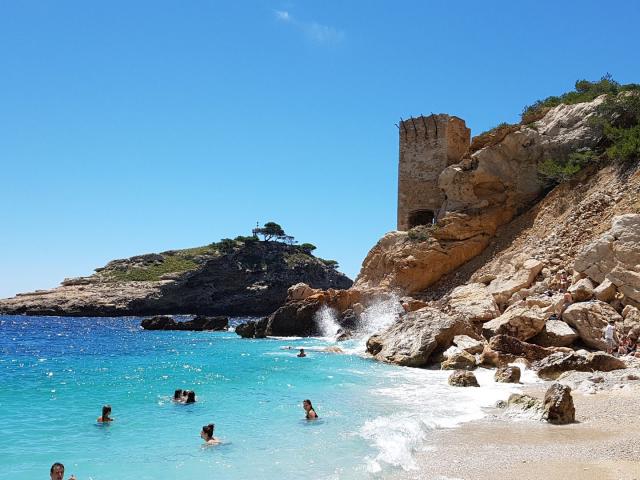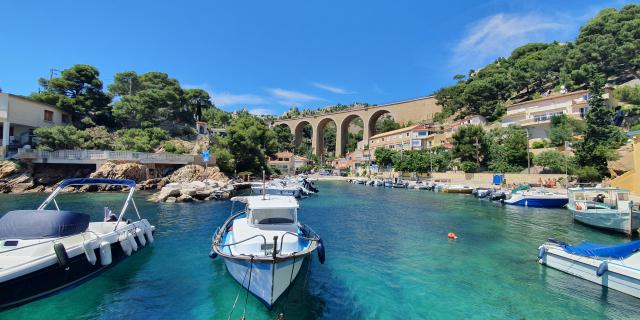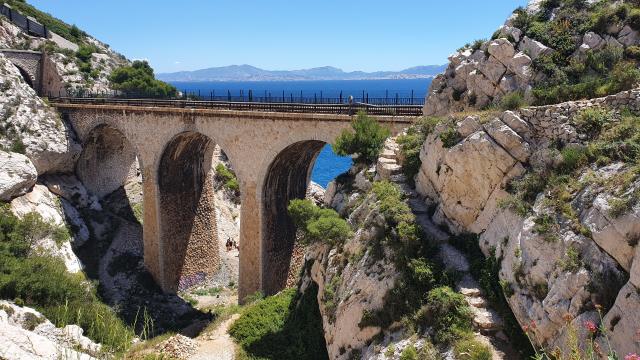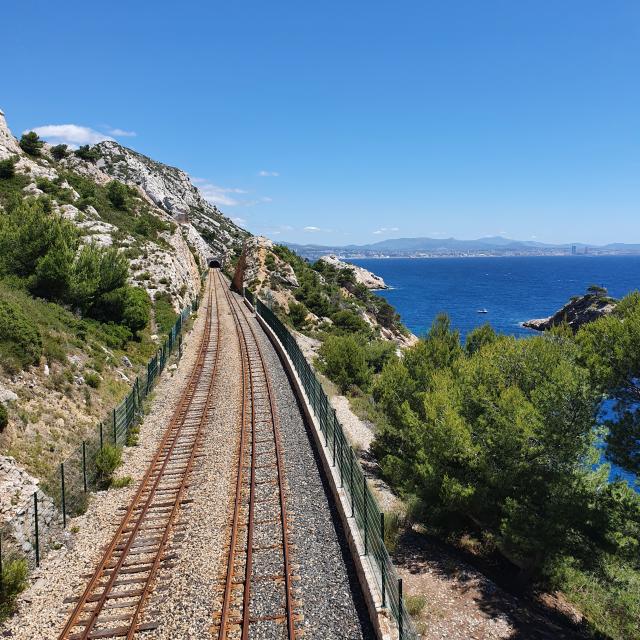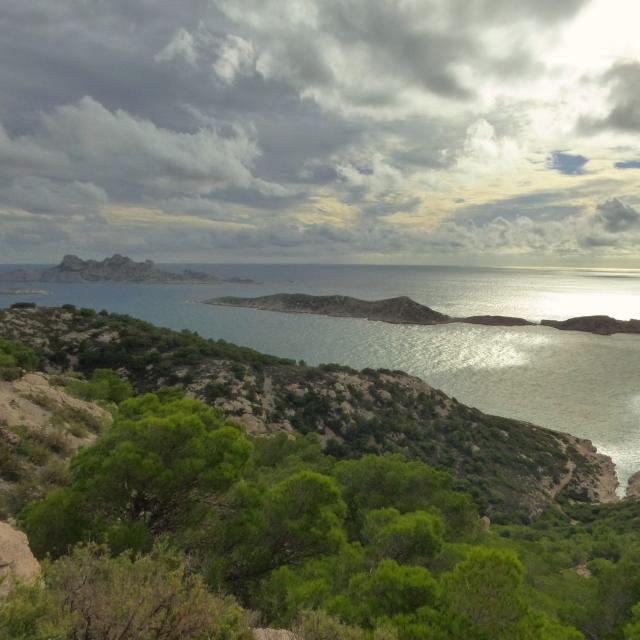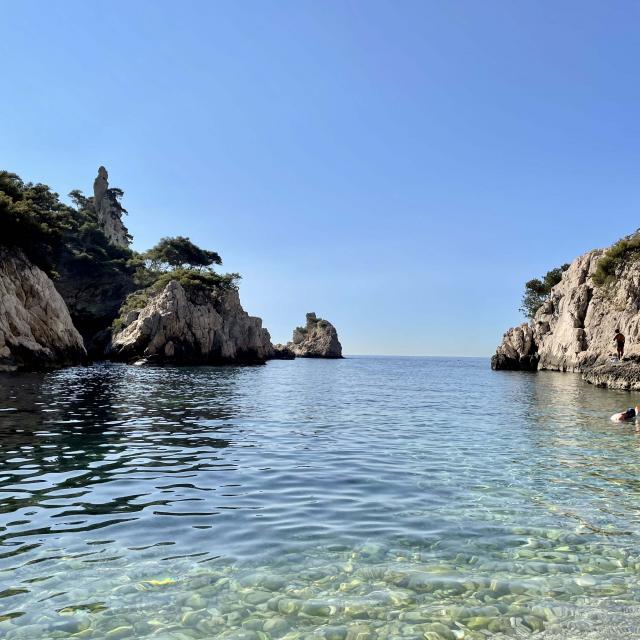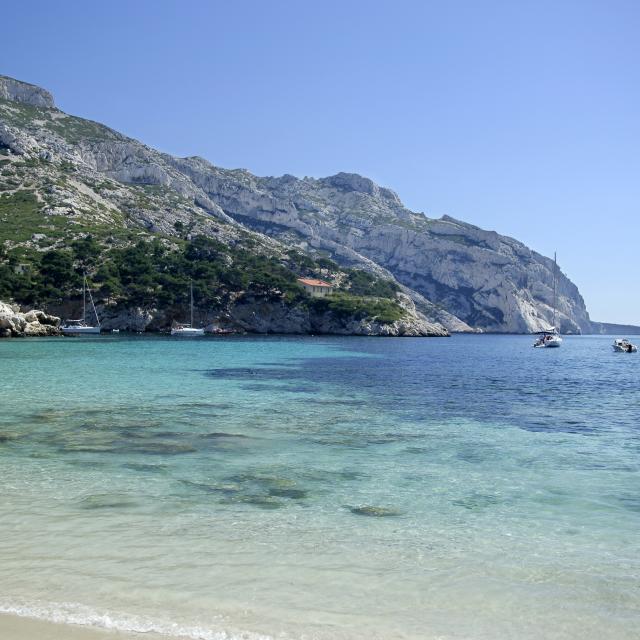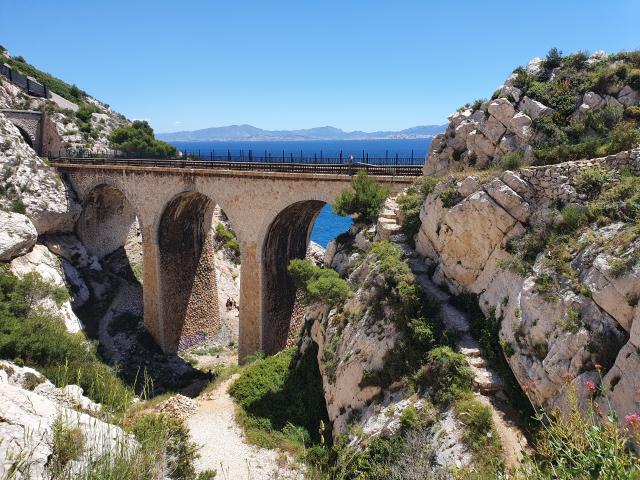
A wild coast
The Côte Bleue is made up of a succession of small ports, beaches and coves lined with pine trees, sometimes difficult to access, but that’s what makes it so charming. Its rugged beauty has led film-makers such as Marcel Pagnol and Robert Guédiguian to choose it as the setting for their films. The archaeological remains of the Méjean shelter attest to the presence of prehistoric man on its shores. Later, the coastal hamlets were inhabited by farmers and fishermen. It was the creation of the Marseille-Miramas railway line in 1915 that opened up the coastal villages.
To swim in these coves, it’s best to wear sandals suitable for walking on the beaches, which are often made up of large pebbles, and to avoid injuring yourself underwater with the sea urchins that dot the rocky seabed. Sea urchins, which you can also enjoy on Sundays in February at the Oursinades in Carry le Rouet and Sausset les Pins. In winter, the waves bring to the beaches mounds of stranded aquatic plants known as the Posidonia meadows, a protected species that is home to many fishes.
A place of leisure
For city dwellers from Marseilles, Aix-en-Provence and Vitrolles, the Côte Bleue is synonymous with leisure activities. Many people come here to stroll or swim at weekends and during the week-ends and holidays. In the creeks such as Niolon, La Redonne and Carro, some families have owned un cabanon ( small cottage) from several generations. It is in the cabanon that families and friends gather to share good times and live to the rhythm of aperitifs, games of pétanque, siestas to the sound of cicadas and card games. In short, it’s a simple art of living, but one that’s becoming increasingly rare with urbanization.
*Cabanon: a former fisherman’s hut. Gradually it was transformed and became a place for rest and Sunday get-togethers
